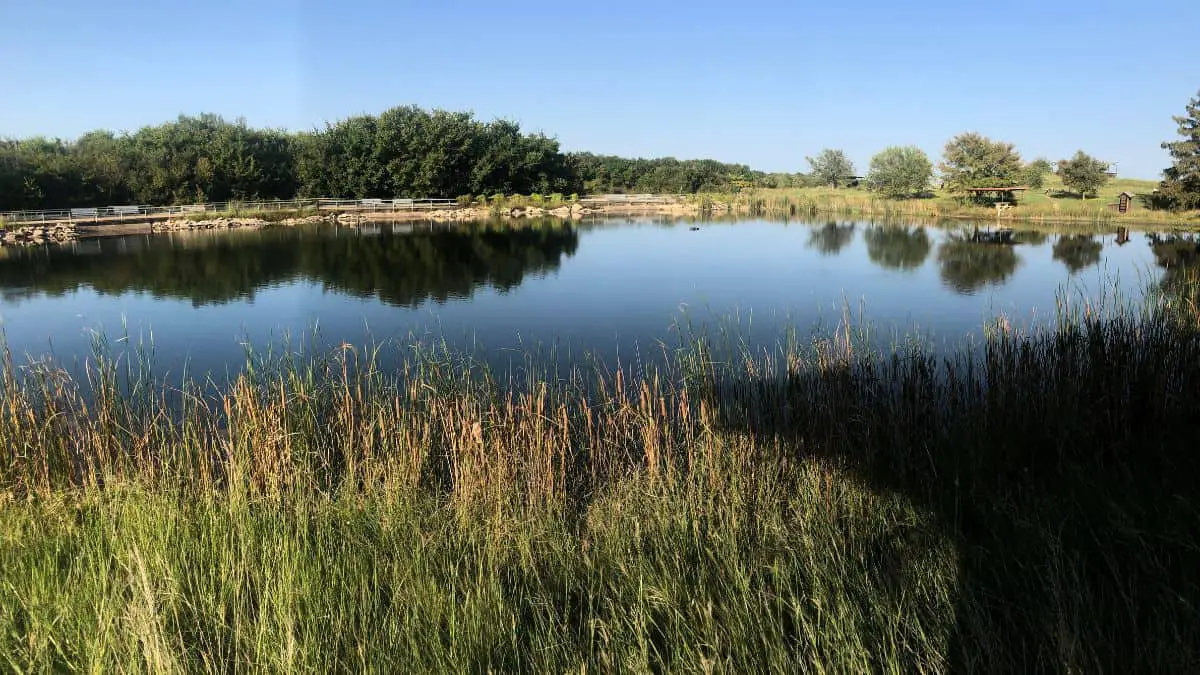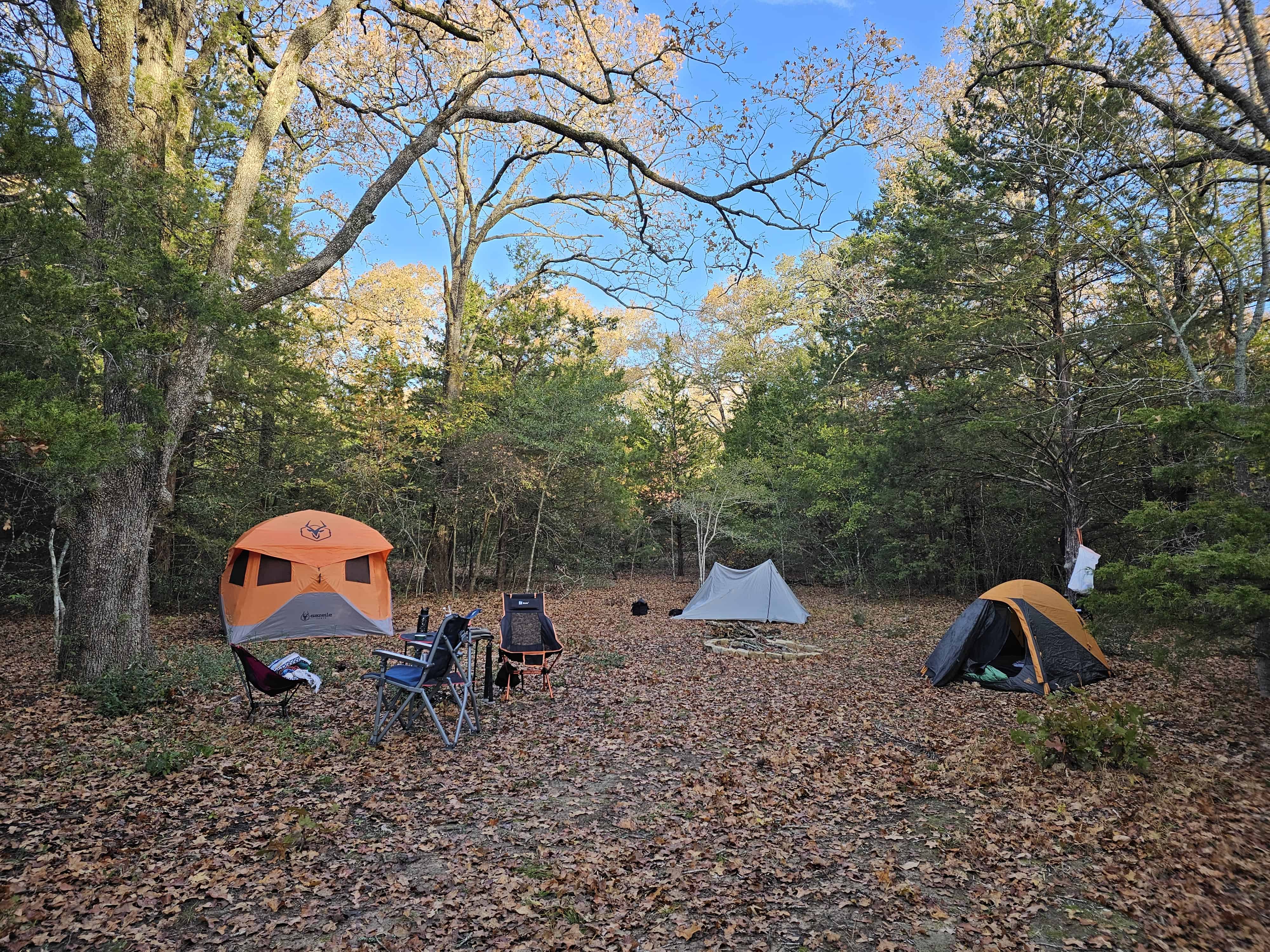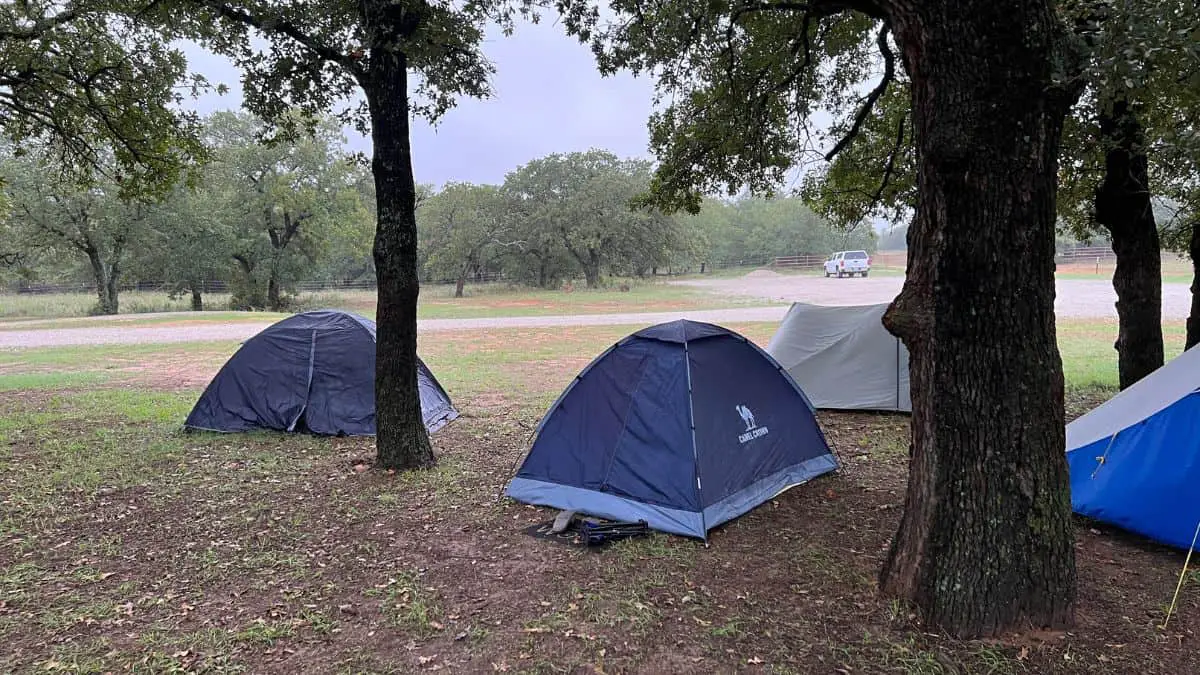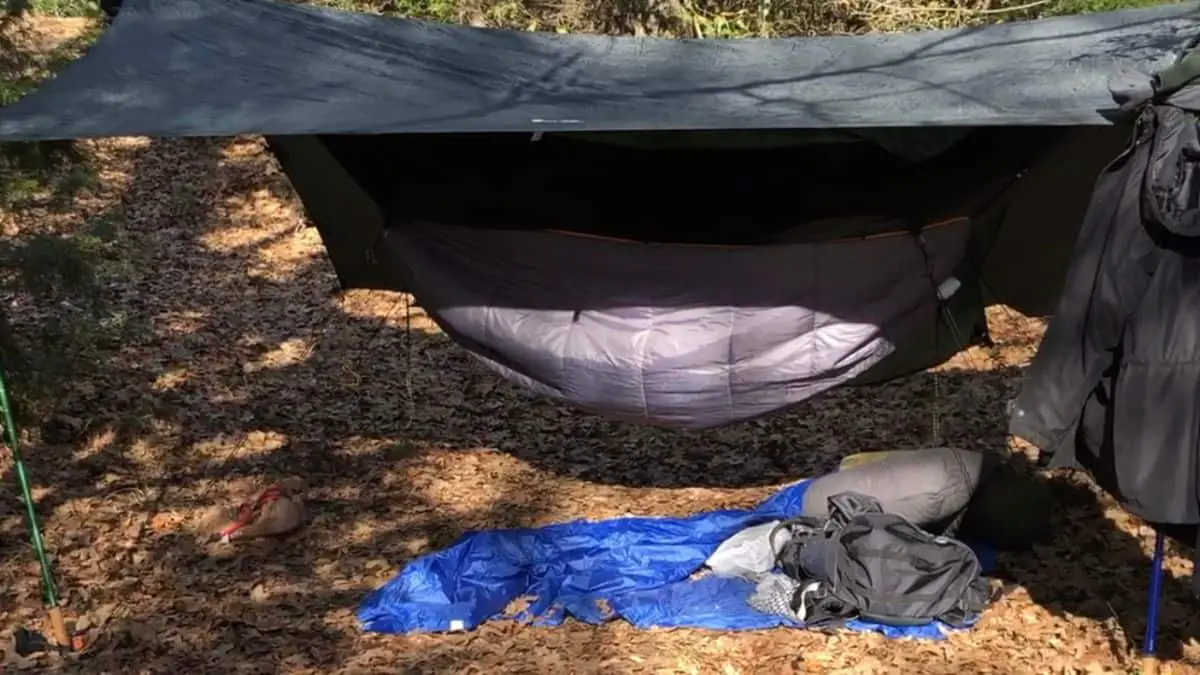What To Bring For Primitive Camping
If you click and purchase with one of our links, we earn a commission. Thanks.

Primitive camping, also known as backcountry camping or dispersed camping, refers to a camping style that involves setting up camp outside of developed campgrounds and without the usual amenities found in those areas, such as running water, electricity, toilets, or marked plots.
Primitive Camping Equipment
| Equipment Category | Description |
|---|---|
| Tent or Shelter | A lightweight, weather-resistant tent or hammock for shelter. |
| Sleeping Bag and Pad | Insulated sleeping bag suitable for the climate and a sleeping pad for ground insulation. |
| Backpack | Durable backpack with enough capacity to carry all gear and supplies. |
| Water Filtration/Purification | Portable water filter or purification tablets to ensure safe drinking water. |
| Cooking Gear | Lightweight stove, fuel, and basic cookware for preparing meals. |
| Food Supplies | Non-perishable, high-energy food items such as nuts, dried fruits, and energy bars. |
| Navigation Tools | GPS device, map, compass, and the knowledge to use them effectively. |
| First Aid Kit | A well-stocked first aid kit for handling minor injuries and emergencies. |
| Clothing | Weather-appropriate and moisture-wicking clothing, including layers and rain gear. |
| Emergency Supplies | Essential items such as a whistle, multi-tool, fire-starting materials, and emergency blanket. |
| Headlamp or Flashlight | Reliable lighting source with extra batteries. |
Due to its nature, primitive camping is often sought after for its solitude, connection with nature, and the challenge it provides, offering a more authentic and immersive outdoor experience compared to camping in developed sites.

Table of Contents
- Car Camping vs. Backpacking
- Shelter and Sleeping
- Clothing for All Conditions
- Food and Cooking Equipment
- Water Filtration and Storage
- Navigation Tools and Communication
- Environmental Stewardship
Car Camping vs. Backpacking
 You can choose to car camp or backpack when primitive camping.
You can choose to car camp or backpack when primitive camping.
Neither one is better or worse for camping. Backpacking does allow you to get to spots that cars cannot go to. On the other hand, I enjoy the simplicity of car camping.
Here in Dallas, we have the LBJ National Grasslands which provides both. If you are in the DFW area, look up the Valley View Group campsite. It’s a hidden primitive campsite gem. The campsite is easy to drive to on good roads.
You won’t have water but there are pit toilets. Optionally, you can hike to the campsite on the Blue Trail.
| Car Camping | Backpacking | |
|---|---|---|
| Definition | Camping near your vehicle at a campsite, allowing you to bring more equipment. Some may use their SUV, hatchback, or truck as a sleeping shelter. | Carrying all your gear in a backpack to a campsite, often hiking a distance from your vehicle or accessible roads. |
| Shelter | Option to use larger tents, or convert vehicles into sleeping areas. | Smaller, lightweight tents or hammocks are used due to the need to carry them. |
| Equipment | Ability to bring more and heavier equipment, such as comfortable chairs, large coolers, and extensive cooking gear. | Equipment must be lightweight and compact; only the essentials are carried. |
| Food and Cooking | Can include a variety of food and cooking options, even gourmet camp cooking. | Food is typically dehydrated or easy-to-cook; cooking gear is minimal. |
| Accessibility | More accessible, often with amenities like water, toilets, and sometimes electricity. | Typically involves more remote locations with limited or no amenities. |
| Comfort | Generally more comfortable with the ability to bring items like air mattresses and larger pillows. | Focused more on minimalism and essential comfort; luxury items are often left behind. |
| Preparation | Requires less meticulous packing, as space is less of a constraint. | Requires careful planning to ensure all essentials are included while keeping weight down. |
The table provides a comparative analysis of two popular camping styles: car camping and backpacking.
Car camping is characterized by the convenience of camping close to your vehicle, allowing you to bring a wider range of equipment. This method does not necessarily mean sleeping in your car; however, many campers do convert their SUVs, hatchbacks, or trucks into comfortable sleeping quarters, similar to smaller RVs.
The proximity to your vehicle enables you to carry heavier and more luxurious items such as large tents, comfortable chairs, extensive cooking gear, and a variety of food options, enhancing the overall comfort and accessibility of your camping experience.
On the other hand, backpacking is a more minimalist approach, where all necessary gear is carried in a backpack. This often involves hiking to more remote locations, far from accessible roads or vehicles. Backpacking necessitates lightweight and compact equipment, with a focus on the essentials.
Shelter options typically include smaller tents or hammocks. The food carried is usually dehydrated or easy to cook, and cooking gear is minimal due to weight and space constraints. Backpacking demands meticulous planning and packing to balance the essentials with a manageable backpack weight, offering a more immersive nature experience at the cost of some comfort and convenience found in car camping.
Shelter and Sleeping
 Primitive camping, a true back-to-nature experience, offers various shelter and sleeping options to suit different styles, whether you’re car camping or backpacking. The choice of shelter largely depends on how you’re accessing your campsite and how much gear you can carry.
Primitive camping, a true back-to-nature experience, offers various shelter and sleeping options to suit different styles, whether you’re car camping or backpacking. The choice of shelter largely depends on how you’re accessing your campsite and how much gear you can carry.
For those who prefer car camping, where proximity to your vehicle allows for more gear, a larger tent is a great choice. These tents offer ample space, enabling a comfortable and relaxed camping experience. They can accommodate extra comforts like cots and air mattresses, enhancing the quality of sleep in the wilderness. Cots, when paired with a closed-cell foam mat, provide not just comfort but also insulation from the cold ground. This setup is ideal for those who prioritize a good night’s sleep and the convenience of car camping.
Backpacking, however, demands a different approach. Weight and space are crucial considerations. Backpacking tents are designed to be lightweight and compact, focusing on basic needs and efficiency. Many backpackers, myself included, opt for a tarp instead of a traditional tent. Tarps are significantly lighter and take up less space, though they offer less protection from the elements and insects. It’s a trade-off between comfort and practicality.
Hammocks are another popular option, especially for those looking to lighten their load. When using a hammock, a tent becomes unnecessary, saving weight and space in your backpack. However, it’s important to have suitable trees for setup and a tarp overhead in case of rain.
Regardless of your shelter choice, sleeping comfortably is key. For backpackers, a sleeping pad is essential. It’s not just about comfort; sleeping pads provide critical insulation, a feature that air mattresses lack. Air mattresses might be more comfortable, but they can leave you feeling colder due to the lack of insulation.
Finally, a sleeping bag is a must-have for any camping trip. Choosing a bag rated for the expected temperatures is crucial to ensure a cozy and safe sleep. A properly rated sleeping bag acts as the final barrier against the night’s chill, ensuring that your primitive camping experience is memorable for the right reasons.
- Tent Options: Use a larger tent for car camping for comfort; opt for smaller, lightweight tents for backpacking.
- Tarp for Backpacking: Consider a tarp as a lightweight alternative to tents when backpacking, saving space and weight.
- Cots and Foam Mats: For car camping, cots paired with closed-cell foam mats offer comfort and insulation from the ground.
- Hammock Use: Hammocks are a viable alternative to tents, especially for backpackers seeking to reduce load.
- Sleeping Pads for Backpackers: Essential for insulation and comfort, sleeping pads are a must-have for backpacking.
- Air Mattresses: More comfortable but less insulated than sleeping pads; better suited for car camping.
- Sleeping Bag Selection: Choose a sleeping bag rated for the expected temperatures to ensure warmth and safety.
Clothing for All Conditions
Primitive camping clothing is no different than any other camping trip. You must be dressed for the weather. And if your camping trips are like mine, the best way to end a drought is to plan a camping trip. Thus, always be prepared to camp in the rain.
We have covered what to wear on camping trips in depth in other article. I will provide a list and links to those articles here:
- Winter camping clothing
- Hot weather camping clothing
- What to wear when you are sleeping on a camping trip
Food and Cooking Equipment
Cooking on a primitive camping trip is not much different than if you are planning to camp at a front country campsite at a state park. You might find yourself with a longer trip to the store though if you forget something.
We have an in-depth guide on camping cooking in this article. If you are wondering what to cook on this campout and don’t want to just eat hot dogs then you should see our 100 camping cooking recipes.
Water Filtration and Storage
If you are car camping then fill up a cooler (we like the Yeti Tundra Hauler) with beverages and ice. I also fill up a 5-gallon collapsible container to make sure we have plenty of water on hand for cooking, cleaning, and fire control. If you are backpacking, you may find yourself needing to filter water and read our guide on using the Sawyer filter here.
Navigation Tools and Communication
Safety and navigation are critical aspects of primitive camping, demanding thorough preparation and a mindful approach. Before embarking on your journey, it’s vital to inform someone at home about your planned route and expected return time. This precaution ensures that in the event of an unexpected situation, help knows where to start looking.
Navigational tools are your lifeline in the wilderness. Keeping your GPS or smartphone charged is essential, and carrying extra batteries or a power bank can be a lifesaver. Modern technology, however, isn’t foolproof. Learning to use a compass effectively is a timeless skill that can guide you when electronic devices fail. A compass can help you maintain a straight line to a known safe point, an invaluable ability if you find yourself disoriented.
Even when venturing a short distance from your trail, such as for a restroom break, use your GPS or compass to mark your location. This habit helps prevent losing your way and ensures you can easily find your way back to the trail. In forests or uneven terrains, it’s surprisingly easy to get turned around, and these tools can be the difference between a quick return and a stressful ordeal. Learn what to do if you find yourself lost in this article.
Furthermore, always carry the five essentials of survival – a shelter, a means of signaling, fire-starting tools, water, and food – even if you’re just day hiking from your base camp. These items prepare you for unforeseen overnight stays or emergencies. By respecting these safety and navigation guidelines, you ensure a more secure and enjoyable primitive camping experience.
Modern Navigation and Communication Tools:
- GPS Devices: In the modern world, a reliable GPS device should be your primary navigation tool. They are updated more frequently and provide real-time location data.
- Satellite Phones: Devices like Garmin or Zoleo satellite phones are vital for staying in touch with loved ones and for emergencies, especially where cell service is unavailable.
- Personal Locator Beacons (PLBs): If investing in a satellite phone isn’t feasible, a PLB is a critical safety item for sending distress signals in emergencies.
Cellular Technology Advancements:
- Stay informed about the latest cellphone models, as brands like Apple are integrating satellite communication capabilities, enhancing safety and connectivity in remote areas.
Traditional Navigation Skills:
- Despite technological advances, knowing how to use a compass to navigate straight lines is an invaluable skill, particularly if electronic devices fail.
- Paper Maps: Always carry paper maps as a backup. They don’t rely on batteries and can be a lifesaver in situations where electronic navigation tools are compromised.
| Feature | GPS | Map and Compass |
|---|---|---|
| Ease of Use | Highly user-friendly; usable by anyone with minimal instruction. | Requires training and practice to use effectively. |
| Reliability | Dependent on battery life and satellite signal; can be unreliable in certain terrains. | Not reliant on electronic signals or power, works in all terrains. |
| Real-Time Tracking | Provides real-time location tracking and directions. | Does not provide real-time tracking; requires manual triangulation for location. |
| Weight and Portability | Compact and lightweight; easy to carry. | Maps and compasses are light but require additional space; vulnerable to environmental conditions. |
| Cost | Can be expensive; requires investment in device and possibly subscription services. | Generally more affordable; no ongoing costs. |
| Longevity and Durability | Susceptible to damage from elements and potential technical failures. | Durable; works under various environmental conditions with no risk of technical failure. |
Environmental Stewardship
Read our guide on how to minimize the waste and damage we do on camping trips in this guide. We want to leave the campsite in better condition than we found it if at all possible.